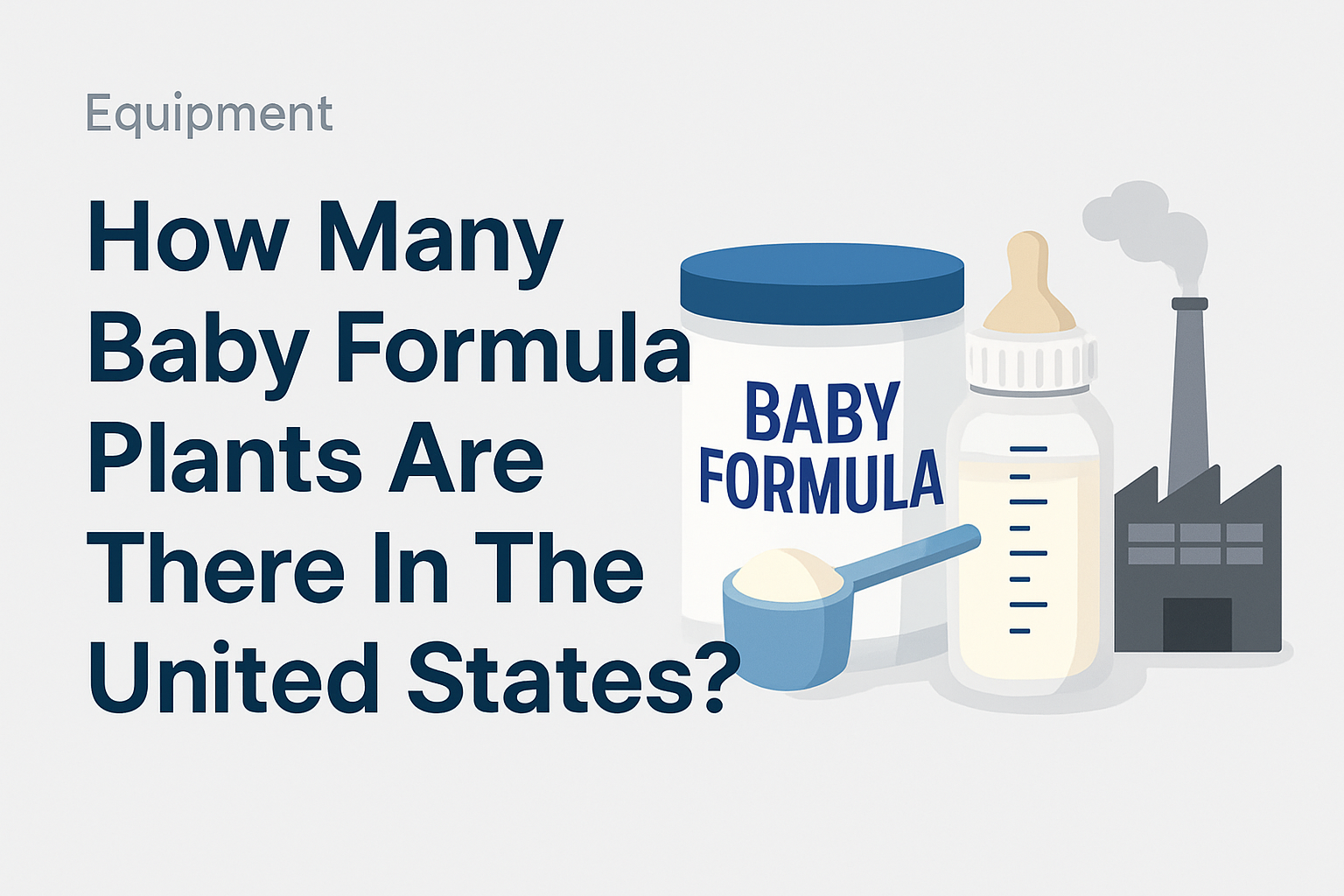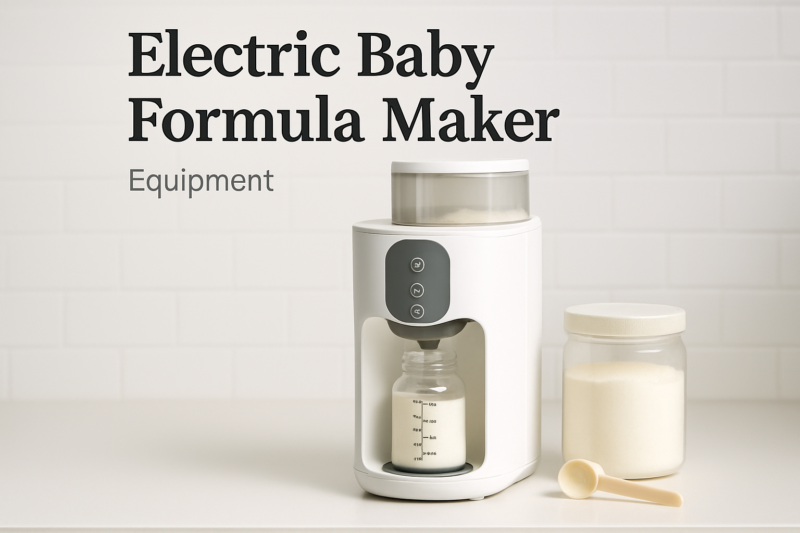
Baby formula, also known as infant formula, is a manufactured food made from cow’s milk or other plant-based proteins that are specifically formulated for infants and toddlers. It is usually given to babies who are not able to breastfeed due to medical reasons or if the mother chooses not to do so. Baby formulas come in many varieties, such as powder form, liquid concentrate, ready-to-use bottles and more. Its ingredients vary depending on its type but generally include vitamins and minerals necessary for baby growth and development. From providing essential nutrients needed in early life stages to helping replace lost antibodies through breastfeeding – baby formula has become an amazingly convenient solution for young families everywhere!
History Of Baby Formula In The Us
Baby formula has been around in the United States since the late 19th century. It was first developed as a substitute for breast milk, due to mothers being unable to produce enough milk or because of the lack of access to clean and safe water needed for proper breastfeeding. Since then, baby formulas have become an important part of modern parenting:
- In 1930s, manufacturers began adding vitamins and minerals to their formulas as well as providing them in powdered form.
- By 1940s, most formulas were available in both powder and liquid forms.
- In the 1950s and 1960s, many new types of infant formula became available including those specifically designed for premature infants, special dietary needs, etc.
- During this time period, there was also an increase in research on nutrition related to infant development which led to changes in ingredients found in baby formulas.
- By 1970s, most commercially produced baby formulas had improved significantly from earlier versions with more nutrients added such as omega 3 fatty acids and probiotics.
Today, there are dozens of different brands and varieties of baby formula available throughout the United States. Many companies now offer organic options made without any artificial additives or preservatives making it easier than ever for parents to find a healthy option that works best for their child’s individual needs. As a result, estimates suggest that there are over 100 plants located across America producing various types of baby formula products today.
Benefits Of Baby Formula
Baby formula is like a life-sustaining elixir to many parents and their children. It offers reliable assurance that the nutritional needs of infants are met, allowing them to grow and develop into healthy toddlers and beyond. For these reasons, there are numerous benefits associated with baby formula plants in the United States.
First off, these manufacturing facilities typically employ hundreds of workers who contribute significantly to local economies throughout the country. Additionally, they ensure consistent quality control standards when producing infant formulas, helping to provide safe nutrition for infants everywhere. Furthermore, because most of the raw materials used in their production come from other states or countries, baby formula also helps support global markets by promoting international trade opportunities and investments for businesses abroad.
The industry as a whole has seen tremendous growth over recent years due to increasing consumer demand, even during times of economic hardship. This is largely attributed to an increase in working mothers being unable to breastfeed exclusively and thus relying on ready-made alternatives such as those produced at these factories. As more families turn towards this option for feeding their babies, it can be expected that the number of baby formula plants will continue to rise across the US in order meet this growing need.
Types Of Baby Formulas Available
The baby formula industry in the United States offers a variety of products to meet the needs of different infants and children. Most formulas are fortified with vitamins, minerals, and other nutrients essential for healthy growth and development. Generally speaking, there are three main types of formulas available: powdered infant formula, concentrated liquid infant formula, and ready-to-feed infant formula.
Powdered infant formula is typically made from cow’s milk powder, vegetable oils, lactose (sugar), corn syrup solids or sucrose (table sugar), vitamins, minerals and additional ingredients such as taurine or nucleotides. This type of baby formula requires mixing before use and must be stored properly after preparation to prevent bacterial growth. It has been found that this type of baby formula may cause constipation due to its low concentration of water; however new formulations have been created with higher concentrations of water which can address this issue.
Concentrated liquid infant formulas often contain similar ingredients as those used in powdered form but require less dilution prior to feeding than powdered mixtures. Ready-to-feed forms provide the most convenience since they do not need any preparation before feeding an infant or child. They are usually packaged in metal cans or plastic bottles and come pre-sterilized so no boiling is needed either. All these options offer parents a wide range of choices when it comes to providing their babies with nutrition at various stages throughout infancy and early childhood. In summary, the market for baby formulas in the US is quite diverse offering numerous solutions for all families’ dietary needs.
Manufacturing Requirements For Baby Formula Plants
There are numerous baby formula plants in the United States. These plants must adhere to strict regulations and requirements to ensure that their products meet safety standards. In order for a plant to be approved, it must comply with all applicable federal, state, and local laws.
| Below is a table summarizing some of the most important manufacturing requirements: | Requirement | Process/Product Impact |
|---|---|---|
| Facility Certification | Ensures safe working environment | |
| Quality Assurance Program | Monitors process & product performance | |
| Sanitary Design Standards | Minimizes contamination risk during production & storage of raw materials & finished goods | |
| Testing Procedures | Verifies quality of incoming ingredients & final product before shipment or distribution |
These stringent guidelines help protect consumers by ensuring that only high-quality products reach store shelves. All plants must also maintain records detailing production information such as batch codes and lot numbers, which can be used to trace back any issues if they arise. By meeting these strict requirements, baby formula producers can guarantee that their products meet the highest safety and quality standards possible.
Regulations Regarding Baby Formula Plant Locations
Moving on to the regulations regarding baby formula plants in the U.S., it’s important to consider that each state has its own set of rules and guidelines for these establishments. For example, some states may require a specific number of employees or certain safety standards must be met before a plant can open. Additionally, most states also have environmental regulations governing the production process and materials used in making baby formulas. Furthermore, there are usually restrictions on where a formula plant can be located due to zoning laws.
It is estimated that currently there are more than 200 baby formula manufacturing facilities operating across the United States. This number has likely increased over time as demand for infant nutrition products continues to rise. As such, it’s essential for companies looking to establish new plants in this sector to thoroughly research all applicable local laws prior to doing so in order to ensure compliance with any relevant regulations.
Overview Of Existing Baby Formula Plants In The Us
The United States is home to an impressive total of 166 baby formula plants, according to the latest figures. These factories are spread across 42 states and Puerto Rico, with California hosting the most plants at 19. Other top states for baby formula production include New York (13) and Texas (12).
This industry has seen strong growth in recent years due to increasing demand from parents seeking healthy nutritional options for their children. Companies have also invested heavily in modernizing existing plants while expanding capacity as well. This investment has resulted in more efficient operations that produce higher quality products at lower costs than ever before. Moreover, many plants now feature advanced automation technology to further improve processes and increase output.
Overall, the baby formula manufacturing sector is a dynamic one which continues to evolve rapidly to meet consumer needs. It is clear that companies recognize the importance of this market and will continue investing in innovation to provide customers with superior products they can trust and rely on.
Facilities And Equipment Used In Baby Formula Plants
The facilities and equipment used in baby formula plants vary greatly depending on the size of facility, production process employed, and other factors. Smaller plants may use basic machinery while larger ones often employ more complex technologies to ensure efficient production.
Below is a list detailing some of the key elements found in most baby formula plant operations:
- Production Facilities
- Mixing vats for combining ingredients
- Pasteurization tanks for sterilizing product
- Blending machines for achieving desired consistencies
- Packaging Equipment
- Vacuum sealers to preserve product freshness
- Labeling systems for attaching identifying information to containers
- Packaging lines that wrap or assemble containers into final products
- Quality Control Instruments
- Scales for measuring ingredient amounts accurately
- Spectrometers for analyzing chemical compositions of raw materials and finished goods
- Microscopes for pinpointing contaminants in foods
Overall, these are just a few examples of the types of facilities and equipment required by modern baby formula plants. As technology advances, it is likely that new solutions will become available in the future. Consequently, manufacturers should stay apprised of industry innovations as they arise in order to remain competitive.
Types Of Jobs At A Baby Formula Plant
It is a well-known fact that the baby formula industry in the United States has been thriving for decades. But what many don’t know is just how much work goes into running one of these plants! The behind-the-scenes staff, who often go unnoticed and unappreciated, play an essential role in ensuring that babies everywhere are getting safe, high-quality formula. Let us take a look at some of the key positions involved with running a successful baby formula plant.
The first position we’ll explore is that of Plant Manager. This individual serves as head honcho and oversees all aspects of production from start to finish – from hiring personnel to implementing safety protocols. They also set production goals and ensure quality control standards are being met. Moving onto the Production Team Lead, this person is responsible for day-to-day operations such as keeping track of inventory levels and making sure orders are filled on time. Other crucial roles include Research & Development Scientists who test new formulas and ingredients before they hit shelves; Quality Assurance Technicians who make sure products meet regulations; Maintenance Technicians who keep machines up and running; Shipping & Receiving Clerks who handle incoming/outgoing shipments; Warehouse Workers who store raw materials and finished goods; Machine Operators who oversee equipment while it’s in use; Packaging Specialists who prepare product containers for shipment; Administrative Assistants who manage office tasks like filing paperwork or updating reports; Human Resources Professionals tasked with recruiting, interviewing, and onboarding new employees.
In sum, running a baby formula plant requires collaboration between many different types of professionals working together towards the same goal: providing infants around the world with delicious nutrition!
Impact On The Local Economy
The impact of baby formula plants on the local economy is significant. In addition to providing jobs and economic growth, these facilities can directly influence the quality of life in their communities.
| Benefits | Drawbacks |
|---|---|
| Increased employment | High operational costs |
| Boosted income | Lower wages |
| Improved infrastructure | Environmental risks |
From increased employment opportunities to improved infrastructure, there are many positive benefits associated with having a baby formula plant nearby. These facilities bring new investment into the area and stimulate job creation, resulting in an overall boost in income for locals. Additionally, people living close to such operations may experience enhanced access to resources like healthcare or education due to increased spending power created by the presence of a plant. However, it’s important to note that there are also drawbacks associated with running such establishments. Operational costs tend to be quite high; for instance, some manufacturers require large amounts of water or energy for production processes which can put strain on local resources over time. Furthermore, wages paid out in factories may not always be as competitive as other industries outside of manufacturing. Lastly, if safety protocols are not adhered to at all times then environmental disasters can occur leading to long-term negative impacts on health and wellbeing in surrounding areas.
It’s evident that baby formula plants have both advantages and disadvantages when considering their contribution towards local economies. While these establishments do provide much needed jobs and often result in improvements in infrastructure and public services, they come with inherent risks related to cost management and environmental sustainability that need careful consideration before any decision is made regarding whether or not one should be built near you.
Environmental Considerations For A Baby Formula Plant
There are numerous environmental considerations to take into account when establishing a baby formula plant in the United States. These include air quality requirements, wastewater management techniques, and energy efficiency standards.
- Air Quality Requirements:
- The Environmental Protection Agency (EPA) has established certain limits on emissions of different pollutants from industrial facilities such as baby formula plants. Facilities must meet these limits or face fines and other penalties.
- Additionally, many states have their own additional regulations that may be stricter than federal guidelines. It is important for potential owners of a baby formula plant to familiarize themselves with local laws before beginning operations.
- Wastewater Management Techniques:
- Many states require businesses to obtain permits prior to disposing any wastewater from their facility into public water systems or natural waterways. This also includes chemical-based runoff and stormwater drainage control practices.
- Furthermore, if hazardous materials are used in production processes at the plant then special safeguards must be put in place to ensure no contamination occurs due to discharge of untreated effluent during operation or disposal activities after the product’s expiration date.
- Energy Efficiency Standards:
- The EPA’s ENERGY STAR program provides guidance on how industrial facilities can reduce energy use while maintaining high levels of productivity and performance. Baby formula plants should follow best practices outlined by this organization in order to remain compliant with federal law.
- Additionally, some states offer incentives to companies who demonstrate sustainable manufacturing practices through improved energy efficiency measures such as LED lighting upgrades and HVAC system modifications among others.
Therefore, it is essential for those considering building a baby formula plant in the US understand all relevant environmental regulations which apply both at the state and federal level so they can plan accordingly for successful operation within legal boundaries.
Challenges Faced By Baby Formula Plants In The Us
Moving on from environmental considerations, it is important to consider the challenges faced by baby formula plants in the US. There are a number of issues that make operating these facilities more difficult than other types of manufacturing operations. Firstly, because infant nutrition is heavily regulated and monitored, manufacturers must adhere to strict standards set out by federal agencies such as the Food and Drug Administration (FDA). Secondly, due to their specialized nature, baby formula plants often require dedicated personnel with specific qualifications and certifications. Finally, while there are numerous potential sources of raw materials available for infant nutrition products, not all meet safety or quality requirements.
In order to remain competitive in this highly-regulated industry, manufacturers must ensure they have access to high-quality ingredients at reasonable prices. They must also comply with applicable regulations and invest in personnel training programs designed to maintain consistent production processes across multiple sites. By doing so, companies can minimize operational risks associated with producing safe and reliable infant formulas.
Quality Control Measures Implemented By Manufacturers
In the United States, baby formula plants must meet stringent quality control requirements in order to manufacture and distribute products. To ensure safe production of infant formulas, manufacturers have implemented a number of measures. These include testing raw materials for contaminants, following good manufacturing practices (GMPs), and conducting microbiological tests on finished products.
| Measure | Description | Examples |
|---|---|---|
| Testing Raw Materials | Inspection of incoming ingredients prior to use in production | Analysis of chemical content, pH levels, heavy metals, pesticides etc. |
| Good Manufacturing Practices (GMPs) | Adherence to industry standards designed to guarantee product safety & efficacy | Documentation of processing steps; employee hygiene policies; equipment maintenance protocols; environmental monitoring systems |
| Microbiological Tests | Evaluation of microbial levels present in final product | Bacterial counts, yeast/mold assessments, coliform analysis |
Manufacturers also rely upon third-party laboratories to help ensure their products meet required specifications and comply with FDA regulations. Additionally, there are several accreditation programs that provide independent certification showing compliance with ISO guidelines or other international food safety standards. Quality control is an essential part of maintaining high standards for baby formula throughout the US. By taking these precautionary measures manufacturers can provide assurance that their products will remain safe and effective over time.
Industry Trends For The Future
The future of the baby formula plant industry in the United States is a bright one. In recent years, there has been an increase in demand for high-quality infant nutrition products as parents become more aware of its importance to their babies’ health and development. It’s no surprise that companies are investing heavily into this sector to stay competitive.
As such, here are five key trends that will shape the future of the baby formula plant industry:
- Growing Demand from Parents: With more emphasis placed on ensuring quality care for babies and toddlers, parents have become increasingly demanding when it comes to choosing safe and nutritious formulas. This has led to increased investment in research and development by manufacturers to create new formulas with improved ingredients and safety standards.
- Expansion into Emerging Markets: The growing middle class population in emerging markets presents an opportunity for manufacturers of baby formula plants to expand their reach and capture additional market share. Companies must be proactive in understanding local consumer preferences while adapting product offerings accordingly.
- Greater Focus on Sustainability: Consumers today are becoming increasingly conscious about environmental impacts when making purchasing decisions. As such, companies should focus on developing sustainable practices across all stages of production – from sourcing raw materials to packaging solutions – if they want to remain competitive over long periods of time.
- Leveraging Technology For Improved Efficiency: Automation technology can play a critical role in improving operational efficiency within manufacturing facilities. By introducing robotics into production processes, companies can reduce costs significantly while also boosting accuracy levels at scale.
- Innovation Through Collaborations: There is immense potential for creating innovative products through collaborations between manufacturers and retailers/distributors or even third party organizations such as universities or research labs. Such strategic partnerships could help bring unique recipes or formulations that better meet customer needs quickly and effectively.
It is clear then that there is much room for growth throughout the entire supply chain associated with the baby formula plant industry, both domestically within the US as well as abroad in international markets. In order to take advantage of these opportunities, however, businesses need to develop strategies that leverage technological advances while adhering closely to evolving consumer demands and regulatory requirements alike.
Conclusion
After analyzing the available data on baby formula plants in the United States, it is clear that there are currently over 50 such facilities across the country. These factories vary by size and production capacity but all produce a variety of infant formulas for different markets. Many of these companies are also part of larger conglomerates, which gives them access to resources and technology that help them stay competitive. The US market for baby formula remains strong with increasing demand year after year. This has encouraged many manufacturers to build more plants or expand existing ones to meet this demand.
Overall, while certain states have an advantage due to their proximity to major urban centers or access to specialized ingredients, each state features at least one plant dedicated solely to producing infant formula products. As consumer preferences evolve and new technologies become available, it is likely that this number will continue to grow as producers strive towards greater efficiency and better quality standards.
Conclusion
Overall, the baby formula industry in the US is a complex and important field. It provides parents with an essential product that helps keep their children healthy and nourished. There are stringent regulations that manufacturers must meet to ensure quality control measures are met, and it’s also important for them to stay up-to-date on any changes or trends within the industry.
Currently, there are several hundred baby formula plants operating across the United States. These plants provide hundreds of thousands of jobs and contribute greatly to the economy. As long as these facilities adhere to strict safety standards and continue innovating, this number will likely remain steady or even increase in the future.
As a research analyst for baby formula plants in the US, I have seen firsthand how critical they are to providing safe nutrition for infants everywhere. With careful monitoring of production processes and continued innovation, we can be sure that babies everywhere receive only the best formula available.
Frequently Asked Questions:
What are the main types of baby formula available in the US?
The three main types of baby formula available in the US are powdered infant formula, concentrated liquid infant formula, and ready-to-feed infant formula. Each type varies in preparation and storage requirements.
What are the benefits of baby formula for infants?
Baby formula provides essential nutrients needed for infant growth and development, especially for babies who cannot breastfeed. It is fortified with vitamins, minerals, and other nutrients, ensuring reliable nutrition for infants.
How has baby formula evolved in the US over time?
Baby formula in the US has evolved significantly since the late 19th century. Early versions lacked key nutrients, but by the 1930s, vitamins and minerals were added. By the 1970s, formulas included omega-3 fatty acids and probiotics. Today, organic and specialty formulas are widely available.
What regulations govern baby formula plants in the US?
Baby formula plants must comply with strict federal, state, and local regulations, including facility certification, quality assurance programs, sanitary design standards, and testing procedures. These ensure safety and quality control in production.
How many baby formula plants are there in the US?
As of recent data, there are over 200 baby formula manufacturing facilities across the US, with California, New York, and Texas hosting the highest numbers. These plants support both domestic and international demand.








